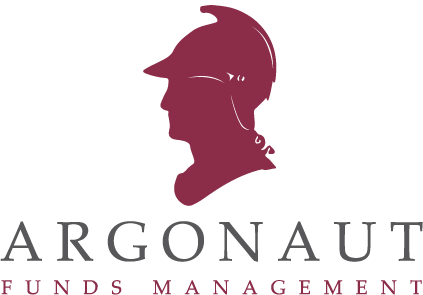Argonaut Funds Management (AFM) is a specialist investor in the Australian resources sector. It has developed a rigorous investment system with decisions based on a three step investment process.
Step One is a high level assessment of the overall market; Step Two is a macro assessment of global trends, favoured commodities and least preferred operating locations; while Step Three consists of specific micro-company analysis with the focus on our “Five Bricks” investment analysis system- management, valuation, financial strength, business strength and responsible investing.
A robust investment process is imperative for a resource focused high conviction funds manager such as AFM. Our funds typically have between 10 and 25 separate investments with holdings accounting for between 4% and 12% of the portfolio.
Step 1 – MARKET
Step 1 is a high level assessment of the overall market. We have drawn on the concept of the “investment pendulum” which was developed by Howard Marks, the renowned investor and founder of US based investment group Oaktree Capital. Being prepared for major shifts in the market is a critical component of generating above average returns.
Marks describes the investment markets like that of a pendulum;
“…..swinging from one extreme to the other. The market swings between euphoria and depression; between celebrating positive developments and obsessing over negatives and thus between overpriced and underpriced.”
Howard Marks
Oaktree Capital
We have taken this concept and added our own market characteristics and investing implications table as a market evaluation checklist.
The objective is to systematically and regularly evaluate the market signals and to ensure they are being considered in the portfolio construction process. While it is impossible to predict the timing of a specific “black swan” or “Unpredictable” event such as COVID 19, what we do know is that unforeseen events happen reasonably regularly and can be planned for in a general sense.
Step 2 – MACRO
Step 2 is a top down assessment of the market. The objectives of Step 2 are to identify and evaluate key macro factors that will impact on the economics of various commodities and industries, and highlight the best and worst locations in which to allocate capital.
The MACRO evaluation stage aims to identify those commodities that will outperform over the short and long term based on their demand and supply characteristics.
This stage also seeks to clearly identify the best and worst places in which to invest.
Global Economic Trends
- Global economic growth
- Tech. developments
- Environmental Issues
- Innovation
- Population Growth
Favoured Sector and
Commodity Exposure
Political and Regulatory Risk
- Economic risk
- Political risk
- Sovereign risk
Least Favoured Sector
and Country Exposure
Step 3 – MICRO
Step 3 is a “bottom up” investment process that evaluates specific company characteristics. This analysis is based our “FIVE BRICKS” investment approach that assesses companies based on Valuation, Management, Business Strength, Financial Strength and with a Responsible Investment overlay to ensure we are only investing in those companies that meet our environmental, governance and social targets.
The MICRO stage involves a bottom up analysis of specific companies. This requires a rigorous evaluation of ESG Compliance, management competence, valuation, business strength and financial strength.
Active Involvement
We are also open to taking a more active approach to our investee companies when required. For example, we may be able to act as a catalyst for unlocking value by providing capital or adding specific expertise.
Valuation
- Discounted cashflow
- EBITDA Multiple
- Price Earnings Multiple
- Enterprise Value / Resource
- Replacement Cost
- Peer Group Comparisons
- Option Pricing Methodology
Management
- Board & Exec. Experience & History
- Technical Expertise
- Key Staff Turnover
- Management Expertise
- Financial Expertise
- Marketing and Promotion
Business Strength
- Resource Size & Quality
- Project Stage
- Security of tenure
- Access to Infrastructure
- Position on Cost Curve
- Demand & Supply Situation
- Mining / Production Risk
- Economic Moat
Financial Strength
- Debt position (D/E and cashflow coverage)
- Debt Covenants
- Construction Costs
- Capital Expenditure Requirements
- Availability of Equity Funding
- Return on Capital
- Return on Equity
Responsible Investing
Environmental / Social / Governance
In summary, we seek to firstly understand the market risk. We then identify our preferred commodity exposures and match this with preferred investment locations. This top down approach then provides a focus and direction for our bottom up stock evaluation process. Our objective is to build a portfolio of good quality, good value companies focused on our key commodity picks.
General Disclosures
- Nothing in this Article should be construed as personal financial product advice. This Article does not consider any of your objectives, financial situation or needs. It contains general financial product advice only and you should therefore consider the appropriateness of the advice having regard to your situation. We recommend you obtain financial, legal and taxation advice before making any financial investment decision.
- This Article is based on information obtained from sources believed to be reliable. Argonaut has made every effort to ensure the information in this Article is accurate, but we do not make any representation or warranty that it is accurate, reliable, complete or up to date. Argonaut accepts no obligation to correct or update the information or the opinions in it. Opinions expressed are subject to change without notice and accurately reflect our personal views at the time of writing.
- For full disclosures please read our General Disclosure and Disclaimer




